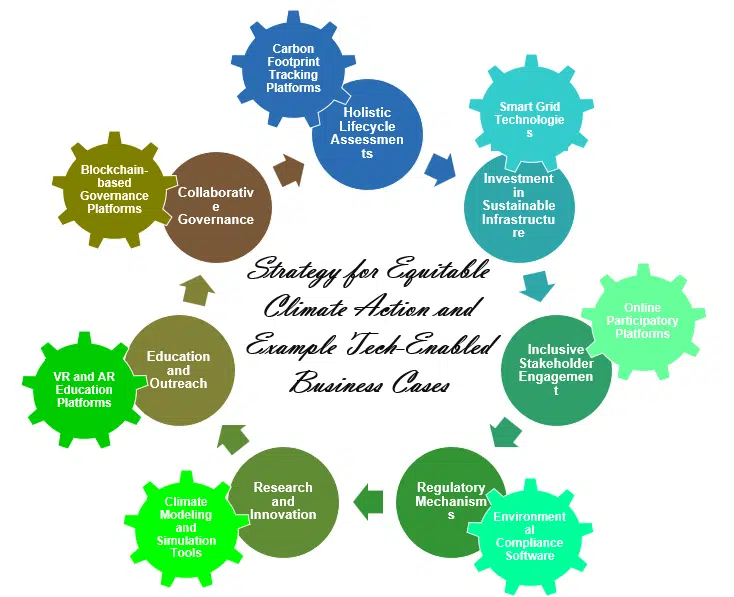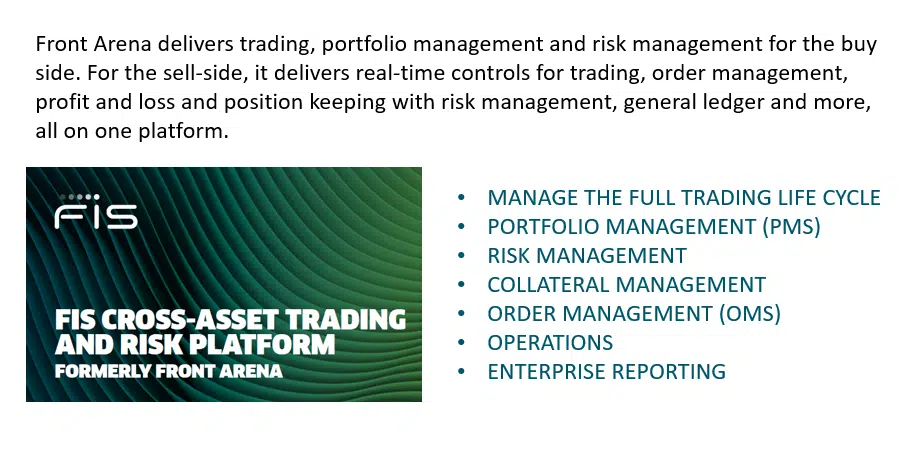Introduction:
In today’s dynamic digital age, cloud computing stands as a transformative force, reshaping the way businesses operate and innovate. It’s a paradigm shift that brings efficiency, scalability, and agility to the forefront. At the core of this revolution lies the intricate and powerful structure known as Cloud Computing Architecture. This blog aims to provide a comprehensive understanding of cloud computing architecture, complemented by insights into navigating the vast cloud landscape using reference architectures.
Understanding Cloud Computing:
Cloud computing, broadly defined, is the delivery of computing services over the internet, encompassing servers, storage, databases, networking, analytics, and software. It eliminates the need for physical hardware ownership and maintenance, ushering in a new era of flexibility and adaptability.
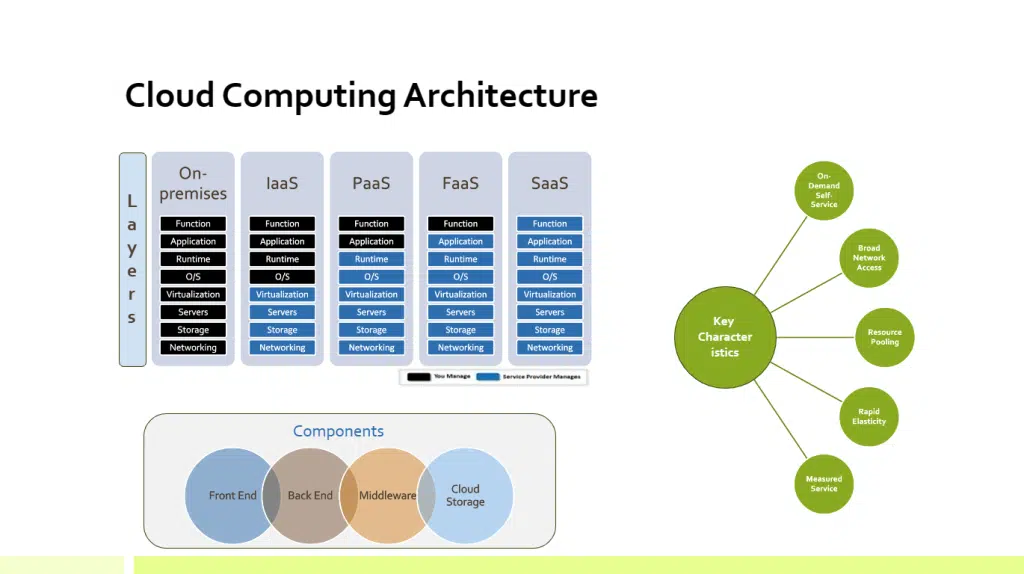
Key Characteristics of Cloud Computing Architecture:
- On-Demand Self-Service:
Users can provision and manage computing resources as needed without requiring human intervention from the service provider. - Broad Network Access:
Cloud services are accessible over the network, promoting ubiquitous availability. - Resource Pooling:
Computing resources are dynamically assigned and reassigned based on demand, serving multiple users. - Rapid Elasticity:
Resources can be quickly scaled up or down to ensure optimal performance and cost efficiency. - Measured Service:
Cloud systems automatically control and optimize resource usage, providing transparency for both the provider and the consumer.
Layers of Cloud Computing Architecture:
- Infrastructure as a Service (IaaS):
Virtualized computing resources are offered over the internet, including virtual machines, storage, and networking. - Platform as a Service (PaaS):
A platform for developing, running, and managing applications without dealing with infrastructure complexities. - Software as a Service (SaaS):
Software applications are delivered over the internet on a subscription basis. - Function as a Service (FaaS):
Serverless computing allows developers to run individual functions in response to events without managing servers.
Components of Cloud Computing Architecture:
- Front End:
The user interface and client-side applications that interact with the cloud service. - Back End:
Cloud infrastructure comprising servers, storage, databases, and other components. - Middleware:
Facilitates communication and data management between the front end and back end. - Cloud Storage:
Centralized storage system for storing and retrieving data over the internet.
Navigating the Cloud Landscape with Reference Architectures:
What are Cloud Computing Reference Architectures?
Cloud computing reference architectures serve as blueprints for building cloud-based solutions. They define the core components, services, and deployment models, providing a common language for organizations and stakeholders. Two main types exist: open and proprietary.
| Consideration | Proprietary | Open |
|---|---|---|
| Vendor lock-in | High | Low |
| Specificity | High | Low |
| Support | High | Low |
| Flexibility | Low | High |
| Cost | High | Low |
| Risk | High | Low |
Open Cloud Computing Reference Architectures:
Developed by open standards organizations or communities, these architectures, such as NIST CRA, OCCI, CIMI, OWASP, and CSA CCM, offer neutrality and flexibility for organizations to choose providers and deployment models.
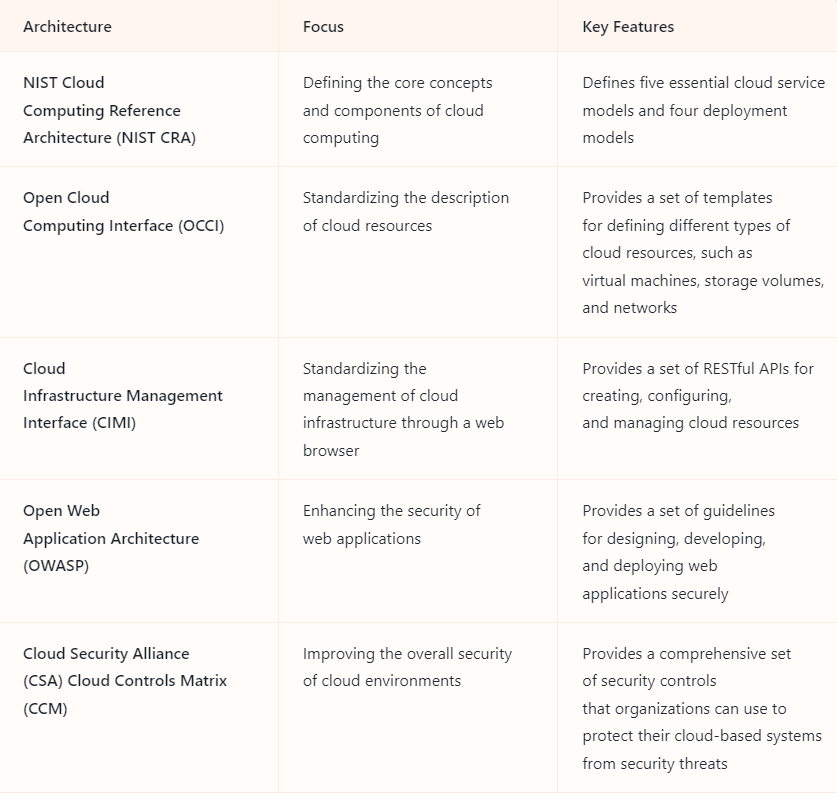
Proprietary Cloud Computing Reference Architectures:
Developed by CSPs or vendors like Microsoft Azure, AWS, GCP, OCI, and IBM, these architectures are tailored to specific offerings, providing optimized solutions but potentially limiting flexibility.
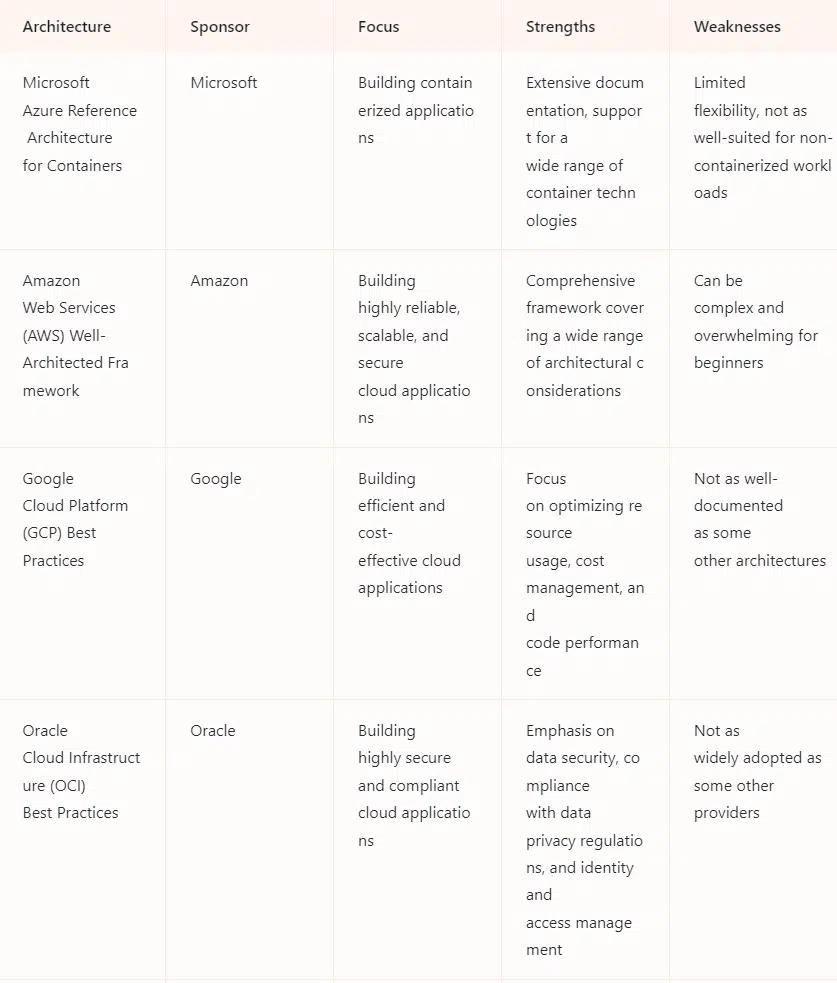
Benefits of Cloud Computing Reference Architectures:
- Consistency and Standardization:
Promotes consistent, standardized solutions, simplifying management and reducing the risk of vulnerabilities. - Reduced Time to Market:
Streamlines development and deployment, reducing the time and effort required for new solutions. - Improved Cost-Efficiency:
Reduces the need for custom development, leading to cost savings in both development and maintenance. - Enhanced Scalability and Agility:
Helps organizations scale efficiently to meet changing business needs, crucial for adapting to market shifts. - Simplified Vendor Comparison:
Provides a common framework for comparing different CSPs, aiding organizations in identifying the best fit for their requirements and budget.
Conclusion:
Cloud computing reference architectures are an invaluable tool for organizations navigating the complexities of the cloud landscape. By adopting these standardized blueprints, organizations can leverage the benefits of consistency, efficiency, scalability, and reduced risk, enabling them to achieve their business objectives in the ever-evolving digital landscape. Whether opting for open standards or proprietary solutions, the key lies in choosing the architecture that aligns with organizational goals, setting the stage for a successful cloud journey. Embracing the potential of cloud computing is not just a trend but a strategic move toward a more efficient, flexible, and future-ready computing environment.
